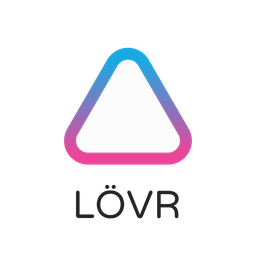mirror of https://github.com/bjornbytes/lovr.git
A previous change modified the rpath to always be @executable_path. This patch moves all libraries next to the executable, so that they can load properly with the new rpath. For better organization, everything is nested into a bin directory. This is congruent with how linux works. Bundled builds remain the same -- they are using @executable_path like before, and libraries get moved next to the executable inside the .app. |
||
|---|---|---|
| deps | ||
| src | ||
| .editorconfig | ||
| .gitignore | ||
| .gitmodules | ||
| CMakeLists.txt | ||
| LICENSE | ||
| README.md | ||
| Tupfile | ||
| Tuprules.tup | ||
| tup.config.default | ||
README.md
LÖVR
A simple Lua framework for rapidly building VR experiences.
You can use LÖVR to easily create VR experiences without much setup or programming experience. The framework is tiny, fast, open source, and supports lots of different platforms and devices.
Homepage | Documentation | FAQ



Features
- Cross-Platform - Runs on Windows, Mac, Linux, Android, WebXR.
- Cross-Device - Supports Vive/Index, Oculus Rift/Quest, Pico, Windows MR, and has a VR simulator.
- Beginner-friendly - Simple VR scenes can be created in just a few lines of Lua.
- Fast - Writen in C99 and scripted with LuaJIT, includes optimized single-pass stereo rendering.
- Asset Import - Supports 3D models (glTF, OBJ), skeletal animation, HDR textures, cubemaps, fonts, etc.
- Spatialized Audio - Audio is automatically spatialized using HRTFs.
- Vector Library - Efficient first-class support for 3D vectors, quaternions, and matrices.
- 3D Rigid Body Physics - Including 4 collider shapes, triangle mesh colliders, and 4 joint types.
- Compute Shaders - For high performance GPU tasks, like particles.
Getting Started
It's really easy to get started making things with LÖVR. Grab a copy of the executable from https://lovr.org/download,
then write a main.lua script and drag its parent folder onto the executable. Here are some example projects to try:
Hello World
function lovr.draw()
lovr.graphics.print('Hello World!', 0, 1.7, -3, .5)
end
Spinning Cube
function lovr.draw()
lovr.graphics.cube('line', 0, 1.7, -1, .5, lovr.timer.getTime())
end
Hand Tracking
function lovr.draw()
for _, hand in ipairs(lovr.headset.getHands()) do
lovr.graphics.sphere(vec3(lovr.headset.getPosition(hand)), .1)
end
end
3D Models
function lovr.load()
model = lovr.graphics.newModel('model.gltf')
end
function lovr.draw()
model:draw(x, y, z)
end
You can try more examples in your browser on the docs page.
Building
You can build LÖVR from source using CMake. Here are the steps using the command line:
mkdir build
cd build
cmake ..
cmake --build .
See the Compiling Guide for more info.
Resources
- Documentation: Guides, tutorials, examples, and API documentation.
- FAQ: Frequently Asked Questions.
- Slack Group: For general LÖVR discussion and support.
- matrix.org: Decentralized alternative to Slack.
- Nightly Builds: Nightly builds for Windows.
- Compiling Guide: Information on compiling LÖVR from source.
- Contributing: Guide for helping out with development 💜
- LÖVE: LÖVR is heavily inspired by LÖVE, a 2D game framework.
Contributors
License
MIT, see LICENSE for details.


